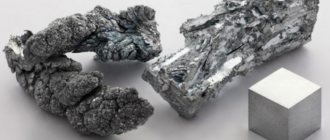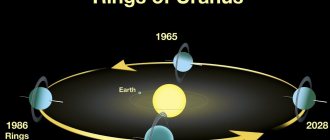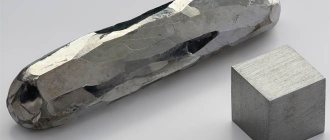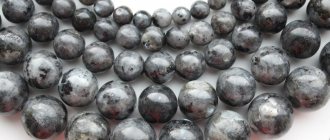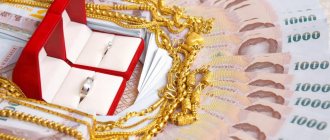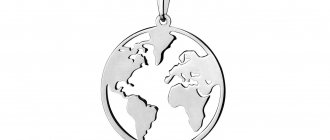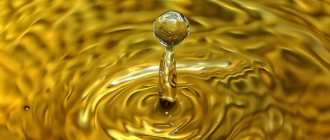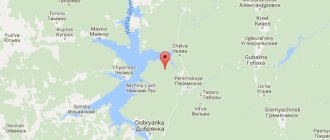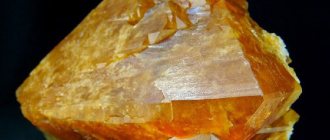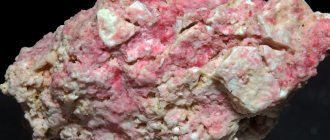How it was opened
People's acquaintance with tungsten dates back to the Middle Ages.
Prospectors
Tungsten was also obtained by European miners during the recovery of tin. But it was considered “garbage” clogging a valuable element. Under the influence of tungsten ore during the reduction process, part of the tin turned into slag, reducing the proportion of the pure substance.
Hence the saying that appeared among prospectors: “Tungsten eats tin like a wolf eats a lamb.”
The science
The history of the discovery of tungsten is associated with several chemists:
- In the mid-18th century, Swede Axel Frederik Kronstedt discovered a heavy metal, which he called Tung Sten (in Swedish - heavy stone).
- 30 years later, his compatriot, member of the country’s Academy of Sciences Karl Scheele, took up the matter. In his free time from working at the pharmacy, he devoted his time to experiments in his home laboratory. He is considered the “father” of not only tungsten. The list also includes barium, manganese, oxygen, and chlorine. From tungsten ore (tungsten) he isolated an acid salt that was not listed in the registers.
- He entrusted further work on the connection to his Spanish colleagues, the Eluard brothers. Which received a new element.
The name and symbol of the metal – Wolframium and W – were proposed by Jens Jakob Berzelius.
The etymology of the name tungsten has German roots: Wolf Rahm (“wolf cream”).
And tungsten was renamed in honor of the scientist - scheelite.
Why is tungsten so heavy?
The density of various elements reflects the size of their constituent atoms. The lower an element is on the periodic table, the larger and heavier the atoms.
Heavier elements such as tungsten have more protons and neutrons in the nucleus and more electrons in orbit around the nucleus. This means that the weight of one atom increases significantly when moving through the periodic table.
In practice, if you hold a piece of tungsten in one hand and the same volume of silver or iron in the other, the tungsten will be much heavier. In particular, the density of tungsten is 19.3 grams per cubic centimeter. For comparison, silver is about half the size of tungsten (10.5 g/cm3), and iron is almost a third less (7.9 g/cm3).
Tungsten's density can be an advantage in certain applications. It is often used in armor-piercing bullets, for example, due to its density and hardness. The military also uses tungsten to make so-called "kinetic bomber" weapons, which fire a tungsten rod like an air ram to penetrate walls and tank armor.
During the Cold War, the US Air Force allegedly experimented with an idea called Project Thor, which would drop a bunch of 6-meter tungsten rods from orbit onto enemy targets. These so-called "rods from God" would have the destructive power of nuclear weapons, but without the nuclear fallout. It turned out that launching heavy rods into space was too expensive.
As presented in nature
The native non-ferrous metal tungsten is not found on the planet. It is presented in the form of ore or minerals.
Ores consist of compounds of tungsten with iron, manganese, calcium, and sometimes other elements, including rare earths.
Minerals are inclusions in granites (up to 2%). Of these, wolframite (tungsten with iron and manganese) and scheelite (with calcium) are of industrial importance.
Each ton of the earth's crust contains 1.30 g of tungsten.
Only diamonds are harder than tungsten carbide
Pure tungsten isn't that hard—you can cut it with a hacksaw—but when tungsten combines with a small amount of carbon, it becomes tungsten carbide, one of the hardest and hardest substances on Earth.
When you add small amounts of carbon or other metals to tungsten, it locks the structure in place and prevents it from easily deforming.
Tungsten rings
Tungsten carbide is so hard that it can only be cut with diamonds, and even then diamonds only work if the tungsten carbide is not completely cured. Tungsten carbide is three times harder than steel, can last up to 100 times longer than steel in highly abrasive conditions, and has the highest compressive strength of any forged metal, meaning it will not dent or warp when compressed with enormous power.
Tungsten is the element that glows inside an incandescent light bulb.
The most common use for tungsten carbide—and the final destination of most of the tungsten mined on the planet—is in specialized tools, especially drill bits. Any drill bit used to cut metal or hard rock must withstand high levels of friction without dulling or breaking. Only diamond drill bits are harder than tungsten carbide, but they are much more expensive.
Physico-chemical characteristics
Pure tungsten is among the first in density, hardness, and first in melting and boiling points among metals. These physical properties are complemented by chemical resistance even at extreme temperatures.
| Properties of the atom | |
| Name, symbol, number | Tungsten / Wolframium (W), 74 |
| Atomic mass (molar mass) | 183.84(1) a. e.m. (g/mol) |
| Electronic configuration | [Xe] 4f14 5d4 6s2 |
| Atomic radius | 137 pm |
| Chemical properties | |
| Covalent radius | 170 pm |
| Ion radius | (+6e) 62 (+4e) 70 pm |
| Electronegativity | 2.3 (Pauling scale) |
| Electrode potential | W ← W3+ 0.11 V W ← W6+ 0.68 V |
| Oxidation states | +2, +3, +4, +5, +6 |
| Ionization energy (first electron) | 769.7 (7.98) kJ/mol (eV) |
| Thermodynamic properties of a simple substance | |
| Density (at normal conditions) | 19.25 g/cm³ |
| Melting temperature | 3695 K (3422 °C, 6192 °F) |
| Boiling temperature | 5828 K (5555 °C, 10031 °F) |
| Ud. heat of fusion | 285.3 kJ/kg 52.31 kJ/mol |
| Ud. heat of vaporization | 4482 kJ/kg 824 kJ/mol |
| Molar heat capacity | 24.27 J/(K mol) |
| Molar volume | 9.53 cm³/mol |
| Crystal lattice of a simple substance | |
| Lattice structure | cubic body-centered |
| Lattice parameters | 3.160 Å |
| Debye temperature | 310K |
| Other characteristics | |
| Thermal conductivity | (300 K) 162.8 W/(mK) |
| CAS number | 7440-33-7 |
At 1580°C it is easily forged and drawn to a thin wire.
These advantages are created by the structure of the substance.
Refractory durable metal, light gray in color - tungsten
In air with a relative humidity of less than 60%, the metal’s resistance to corrosion is one hundred percent.
Properties of the most important tungsten compounds.
Among the most important compounds of tungsten are its oxide, chloride, carbide and ammonium paratungstate.
Tungsten(VI) oxide
WO3 is a crystalline substance of light yellow color, when heated it becomes orange, melting point is 1473 ° C, boiling point is 1800 ° C. The corresponding tungstic acid is unstable; in an aqueous solution, a dihydrate precipitates, losing one molecule of water at 70–100 ° C , and the second – at 180–350° C. When WO3 reacts with alkalis, tungstates are formed.
Tungstic acid anions tend to form polycompounds. When reacting with concentrated acids, mixed anhydrides are formed:
12WO3 + H3PO4(boiling, conc.) = H3[PW12O40]
When tungsten oxide reacts with metallic sodium, non-stoichiometric sodium tungstate is formed, called “tungsten bronze”:
WO3+ x
Na = Na
x
WO3
When tungsten oxide is reduced with hydrogen at the moment of separation, hydrated oxides with a mixed oxidation state are formed - “tungsten blues” WO3– n
(OH)
n
,
n
= 0.5–0.1.
WO3 + Zn + HCl ® [W10O25(OH) + W3O8(OH)] (“blue”), W2O5(OH) (brown)
Tungsten(VI) oxide
intermediate product in the production of tungsten and its compounds. It is a component of some industrially important hydrogenation catalysts and ceramic pigments.
Higher tungsten chloride
WCl6 is formed by the reaction of tungsten oxide (or tungsten metal) with chlorine (as well as fluorine) or carbon tetrachloride. It differs from other tungsten compounds by its low boiling point (347 ° C). By its chemical nature, chloride is an acid chloride of tungstic acid, therefore, when interacting with water, incomplete acid chlorides are formed, and when interacting with alkalis, salts are formed. As a result of the reduction of tungsten chloride with aluminum in the presence of carbon monoxide, tungsten carbonyl is formed:
WCl6 + 2Al + 6CO = [W(CO)6]Ї + 2AlCl3 (in ether)
Tungsten carbide WC is obtained by reacting powdered tungsten with coal in a reducing atmosphere. Its hardness, comparable to diamond, determines its scope of application.
Ammonium tungstate (NH4)2WO4 is stable only in ammonia solution. In dilute hydrochloric acid, ammonium paratungstate (NH4)10H2W12O42, which is the main tungsten intermediate on the world market, precipitates. Ammonium paratungstate easily decomposes when heated:
(NH4)10H2W12O42 = 10NH3 + 12WO3 + 6H2O (400 – 500° C)
Receiving technology
Tungsten ores from different mining sites contain 0.3-2.5% metal oxide. Therefore, the industrial production of a product from ore begins at processing plants.
This is a multi-step process:
- Ore crushing.
- Grinding.
- Flotation.
- Burning.
The content of useful components increases to 60%:
- The purity of the concentrate is increased by breaking down impurities with sodium hydroxide and using the ion exchange extraction method.
- It is reduced to powder at 650-700°C in a hydrogen environment.
Refractoriness turned out to be a disadvantage that precluded classical fusion.
Solid forms are created using powder metallurgy:
- The powder is compressed.
- Sintering is carried out at 1250-1300°C in hydrogen.
- Affected by electricity.
- Heat to 3000°C, achieving monolithic sintering.
Tungsten powder
Additionally, the metal is cleaned by zone melting.
Manufacturing of posts
We have already found out what kind of metal tungsten is, and now we will find out in what range it is manufactured. Compact ingots - bars - are made from the powder compound. For this, only powder that has been reduced with hydrogen is used. They are made by pressing and sintering. The resulting ingots are quite strong, but fragile. In other words, they are difficult to forge. To improve this technological property, the bars are subjected to high-temperature treatment. A different assortment is made from this product.
Nomenclature of metal grades
Based on tungsten or with its participation, metallurgists smelt products of dozens of names and brands.
Among the most common are pure tungsten (HF) and alloy with rhenium (HR).
The classification of tungsten grades is based on the composition of the additives:
| Brand name | Type of additive |
| VA | Aluminum + siliceous alkali |
| VM | Thorium + siliceous alkali |
| IN AND | Yttrium oxide |
| VT | Thorium oxide |
| VL | Lanthanum oxide |
Highest melting point of any metal
One of the most impressive and useful properties of tungsten is its high melting point, the highest of all metallic elements. Pure tungsten melts at a whopping 3,422 degrees Celsius and does not boil until the temperature reaches 5,555 degrees Celsius, which is the temperature of the sun's photosphere.
This is what tungsten looks like
In comparison, iron has a melting point of 1538 degrees Celsius, while gold liquefies at just 1064.18 degrees Celsius.
All metals have relatively high melting points because their atoms are held together by strong metallic bonds. Metallic bonds are so strong because they share electrons across an entire three-dimensional array of atoms. Tungsten lasts longer than other metals due to the unusual strength and directionality of its metallic bonds.
Why is it important? Think of Edison working on the filament for the incandescent light bulb. He needed a material that not only emits light, but also does not melt from heat.
Edison experimented with many different incandescent materials, including platinum, iridium and bamboo, but it was another American inventor, William Coolidge, who is credited with creating the tungsten fibers used in most light bulbs throughout the 20th century.
Tungsten's high melting point has other benefits, such as when it is mixed as an alloy with materials such as steel. Tungsten alloys are applied to sections of rockets and missiles that must withstand extreme heat, including the engine nozzles that emit explosive streams of rocket fuel.
How to use
The properties of tungsten identified the main consumer. This is metallurgy. It creates end products and sources for other industries.
Powdered tungsten is the basis or component of hard, heat-resistant, wear-resistant alloys and premium steel grades.
Metal, alloys
A wide range of products are created from refractory metals and alloys:
- Components and parts of aircraft and rocket engines.
- Elements of electric vacuum devices (picture tubes, incandescent filaments).
Tungsten filament - Vacuum furnace heaters.
- Electrodes for argon-arc welding. They do not melt and create a strong weld. Suitable for materials of any composition (non-ferrous metals, alloy steels, etc.).
- Containers for radioactive products. Here the advantages of the metal over lead turned out to be decisive.
- Surgical instruments.
The characteristics of the metal suited the defense complex: tank, torpedo armor, large-caliber shells, bullets. As well as super-high-speed rotors of gyroscopes that control the flight path of ballistic missiles.
Tungsten ingots
Connections
The range of applications for tungsten compounds is wide:
- Without ditelluride, it is impossible to convert heat into electricity.
- Carbide is the basis of alloys and composites for machining metals and non-metals. For miners, oil workers, gas workers - for drilling wells.
- Sulfide is a heat-resistant (up to 500°C) lubricant.
- Trioxide is a material for creating the electrolyte of fuel cells operating at elevated temperatures.
Tungsten compounds are purchased by manufacturers of varnishes, paints, and textiles.
Other forms
Isotope W184 is a component of alloys with uranium isotopes. They are used to make nuclear-fueled rocket engines.
A radionuclide of artificial origin (W185) is in demand as a radiation detector (including X-rays) in the nuclear segment of physics and medicine.
Processed products
Due to its unique properties, primarily hardness and refractoriness, tungsten has found a wide range of applications since its discovery. As a refractory material, it is widely used in metallurgy. Although other industries cannot do without such valuable material.
Lighting
Due to their low electrical conductivity and low evaporation rate, at one time tungsten filaments made it possible to make a technical revolution in the entire industry of creating electric lighting devices, and also began to be used in the manufacture of electronic vacuum devices.
Shells
The high level of density of this material, reaching up to 19.3 g/cm3, along with its strength, provided gunsmiths with an excellent means of destroying armor. Today, tungsten is one of the main chemical elements that make up the heavy alloy cores of armor-piercing bullets and shells.
Tungsten scrap
Electrodes
Non-consumable tungsten electrodes are used as a welding material for a process carried out using gases. Helium or argon protects the connection point from atmospheric influences, and the electrode at this time withstands significant temperatures and a long service life. This allows you to create optimal working conditions while avoiding unnecessary costs.
Tungsten and wire
Here is another type of widespread product. Tungsten wire is made from the forged rods we discussed earlier. Drawing is carried out with a gradual decrease in temperature from 1000°C to 400°C. The product is then cleaned by annealing, electrolytic polishing or electrolytic etching. Since tungsten is a refractory metal, the wire is used in resistance elements in heating furnaces at temperatures up to 3000°C. Thermoelectric converters are made from it, as well as spirals of incandescent lamps, loop heaters and much more.
Reserves and production
The largest volumes of tungsten reserves are in:
- Kazakhstan;
- China;
- USA;
- Canada.
Locations have also been identified in Russia and a number of other countries. Industrial production of this element consists of three stages:
- At the first stage, ore is enriched, which makes it possible to obtain anhydrite.
- The second stage ensures the reduction of tungsten to a powder state.
- At the third stage, the metal is formed into a monolith.
It is worth considering the process in detail.
Ore beneficiation
So, tungsten does not occur in nature as a separate element. It is always a component of various compounds. Moreover, the richest ores contain no more than 3% tungsten. Therefore, enrichment is initially carried out:
- The rock is crushed and crushed.
- The material is processed based on the type of ore.
- Enrichment is carried out using the gravity method. The principle is based on the use of two forces: centrifugal and gravity. This ensures mineral separation based on size, density and wettability, allowing waste rock to be disposed of.
- Magnetic separation of wolframite is carried out to ensure the purity of the concentrate.
As a result, the content of the desired metal can be an average of 65% and a maximum of 85%.
Another type of compound with industrial purposes, scheelite, is purified differently.
Since it does not belong to the group of magnetic minerals, separation cannot be applied to it. Therefore, enrichment is carried out through flotation, which involves the separation of particles in an aqueous suspension. After processing, electrostatic separation is carried out. The concentration of scheelite can eventually reach 90%.
The ore can also contain two tungsten compounds at once. Under these circumstances, combined processing methods using flotation and gravity methods are used.
If more purification is needed, the supplement uses a number of tools that are determined based on the type of impurity. For example, if it is necessary to reduce the amount of phosphorus in the concentrate, they resort to cold treatment with hydrochloric acid. The second option with firing and further use of acids allows you to remove copper and arsenic.
If it is necessary to achieve the form of a soluble compound, the methods may be:
- carry out sintering of the concentration with excess soda;
- leaching is carried out by extracting tungsten with a soda solution at high temperature and under pressure;
- treated with chlorine gas to produce tungsten chloride, followed by sublimation for processing into elemental metal.
As a result of using standard enrichment methods, tungsten trioxide can be obtained, which is used in the metal production process. This compound also produces tungsten carbide, which is the basis of most hard alloys.
Tungsten Recovery
So, after obtaining tungsten trioxide, the next stage of production is to reduce it to its metal state. Typically, this process implies the need for the hydrogen method:
- A container with a connection is placed in the oven.
- The container moves all the time, and the temperature rises.
- Hydrogen is supplied towards the trioxide.
During the recovery process, the bulk density increases and the loading volume is reduced by half. In this regard, the run is carried out in two stages, using different ovens.
The first stage involves the formation of dioxide from tungsten trioxide.
The second produces pure powder, which is sifted through a mesh, separating large particles for additional grinding.
In some cases, carbon is used for reduction, which somewhat simplifies the process, but production requires high temperatures. The main disadvantage of this method is the reaction of coal and other impurities with tungsten, which causes contamination of the material. There are other methods, but the hydrogen version has the greatest applicability.
Obtaining monolithic metal
The previous stages of production have been implemented for a long time, but special technology was needed to produce ingots. Due to the main property of metal - refractoriness - it is impossible to use the standard method of melting and casting a mold.
The essence of the method used is the transformation of powder into metal using electric current. The process takes place in several stages:
- The metal powder is compressed.
- At a temperature of 1.3 thousand degrees Celsius, the block is sintered to increase strength. The procedure is carried out in a sealed oven, which is continuously supplied with hydrogen, which is necessary for effective reduction. It penetrates the material, which ensures the creation of metallic contact. As a result, the strength increases significantly, while the size of the bar decreases to 5%.
- The main stage is welding. It is carried out at a temperature of 3 thousand degrees Celsius by passing an electric current through a bar. Hydrogen in this case is also required, since it avoids oxidation. The current strength is determined taking into account the cross-section of the bar: 10 by 10 millimeters - 2.5 thousand amperes, 25 by 25 millimeters - 9 thousand amperes. The supplied voltage varies from 10 to 20 volts.
To obtain highly purified material, additives are used that evaporate during welding, thereby removing other impurities. For example, alkali metal oxides are used. If the temperature regime is observed, you can reach a purification level of 99.995%.
Tungsten and rhenium
The alloy of these two elements is quite widely used for the manufacture of high-temperature thermocouples. Tungsten - what metal? Like rhenium, it is a heat-resistant metal, and alloying the elements reduces this property. But what if you take two almost identical substances? Then their melting point will not decrease.
If rhenium is used as an additive, an increase in the heat resistance and ductility of tungsten will be observed. This alloy is produced by smelting in powder metallurgy. Thermocouples made from these materials are heat-resistant and can measure temperatures above 2000°C, but only in an inert environment. Of course, such products are expensive, because in one year only 40 tons of rhenium and only 51 tons of tungsten are mined.
Tungsten rods
Of course, this is one of the most common types of products made from this metal. What kind of tungsten is used to make them? These are the posts described above, which are forged on a rotary forging machine. It is important to note that the process occurs in a heated state (1450-1500°C). The resulting rods are used in a wide variety of industries. For example, for the manufacture of welding electrodes. In addition, tungsten rods are widely used in heaters. They operate in furnaces at temperatures up to 3000 °C in vacuum, inert gas or hydrogen. The rods can also be used as cathodes of electronic and gas-discharge devices, radio tubes.
Interestingly, the electrodes themselves are non-consumable, and therefore during welding, the supply of filler material (wire, rod) is necessary. When melted with the material being welded, it creates a weld pool. These electrodes are usually used for welding non-ferrous metals.
